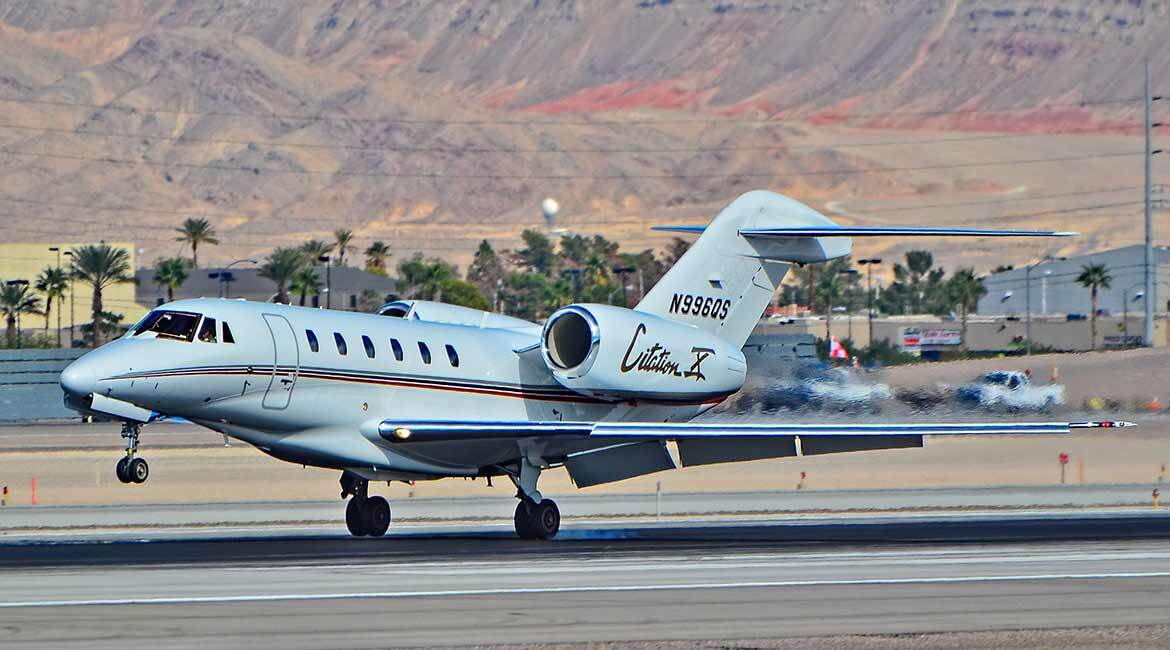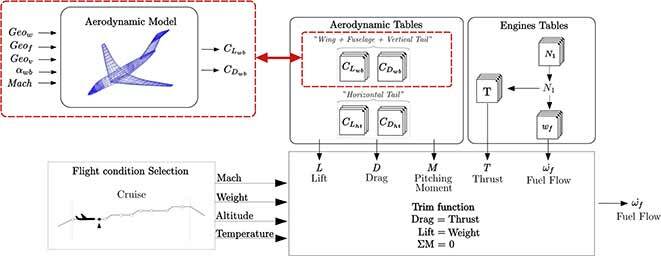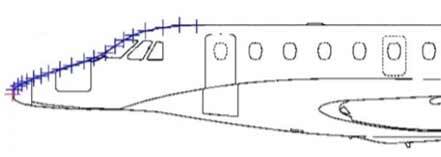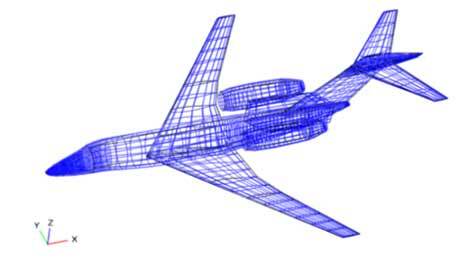Aerodynamic Modeling of the World’s Fastest Business Jet

For a morphing wing study on the Cessna Citation X, the LARCASE team has developed an aerodynamic model of the aircraft using OpenVSP, NASA’s open source aerodynamic design and calculation software. The resulting aerodynamic polars were then compared with those from a certified flight simulator: a maximum difference of 0.070 was noted on the lift coefficient and 0.006 on the drag coefficient for incidence angles of less than 5 degrees.
Introduction
In recent years, the aerospace industry, increasingly aware of global warming affecting the whole planet, is striving to reduce its own toxic gas emissions [1]. Highly committed researchers at the Research Laboratory in active control, avionics and aeroservoelasticity (LARCASE) are working on possible methods to reduce aircraft fuel consumption [2-11]. One method is to study the pros and cons of an airplane equipped with a morphing wing system. The purpose of this concept, developed by NASA, is to adapt an aircraft wing shape in flight to minimize the drag. Nowadays, this technique has been the subject of aerodynamic studies showing encouraging results, conducted within the framework of the CRIAQ 7.1 and MDO-505 projects in which LARCASE participated [12-16]. The new challenge aims to adapt this morphing wing technology on an airplane similar to those we use for traveling, such as the Cessna Citation X business jet.
Methodology: To develop an aerodynamic model of the Cessna Citation X using OpenVSP

Fig.1 Performance model drawn up by LARCASE and proposed changes (in red)
The LARCASE team started with a performance model as described in Fig. 1. Based on flight conditions entered, the model calculates the amount of fuel that would be used by the aircraft. For these calculations, the program draws information on the aircraft from aerodynamic and engine manufacturer’s data tables. To evaluate the amount of fuel required for the Cessna Citation X should the aircraft be equipped with a morphing system, the program presented in Fig. 1 must be adapted to consider the proposed geometry (Geow wing, Geof fuselage and Geov vertical tail). The aircraft’s original aerodynamic tables must therefore be replaced by other data based on the new geometry. Therefore, replacing the aerodynamic tables by an aerodynamic model becomes relevant.

Fig. 2 Overview of Cessna Citation X fuselage digitalization
Aerodynamic calculations were made with the OpenVSP solver. To execute the calculations, this open-source software from NASA requires information on the aircraft’s geometry. However, such information is confidential and not public, making it necessary to work around the problem. So, the outer forms of the aircraft were extracted from photos and plans using a digitalization process. This involved using a digitizer software to cover the airplane layout and pinpoint the outline with blue crosses (Fig. 2). Once the whole contour was defined, the software showed the coordinates of each point. They were then scaled using the reference lengths of the aircraft, which are public knowledge (wingspan, height, length, etc.). With this information, OpenVSP can then interpret the aircraft’s geometry (Fig.3) and execute the aerodynamic calculations of the interaction between the air and this geometry.

Fig. 3 Modeling the Citation X with the OpenVSP software user interface.
Simulation Results
The entire Cessna Citation X cruise flight envelope was covered during the simulations, with a Mach number ranging from 0.6 to 0.9 and an angle of attack of -2 ° to 10°. Figure 4 shows some of the results that helped to evaluate the model’s quality.

Fig. 4 Comparison of lift and drag coefficients from the OpenVSP model with reference coefficients from the flight simulator.
It should be noted that the OpenVSP software estimates aircraft aerodynamic coefficients based on the “Vortex-Lattice” (VLM) method. This method is considered imprecise because it makes many assumptions to simplify calculations and achieve speedy resolution. However, the results presented in Fig.4 show that the estimation obtained was fairly accurate as the two data series were very close. To ensure confidentiality, the axes were standardized, otherwise a maximum difference of 0.070 would have been observed on the lift coefficient and 0.006 on the drag coefficient.
Conclusion
So far, the results in this project of evaluating a morphing wing for the Cessna Citation X have been encouraging. In fact, following the results obtained with OpenVSP, the aerodynamic model seems to be able to provide aerodynamic coefficients CL and CD close to those delivered from the Cessna Citation X. Consequently, the aerodynamic model has been validated. In this way, this model could eventually replace the aerodynamic tables of the performance model.
Additional Information
For more information on this research, please see the following conference paper:
M. Segui, G. Ghazi, R. Botez and Emily Thompson. “Design, Development and Validation of a Cessna Citation X Aerodynamic Model using OpenVSP Software,” 2018 Modeling and Simulation Technologies Conference, AIAA AVIATION Forum, (AIAA 2018-3895).



